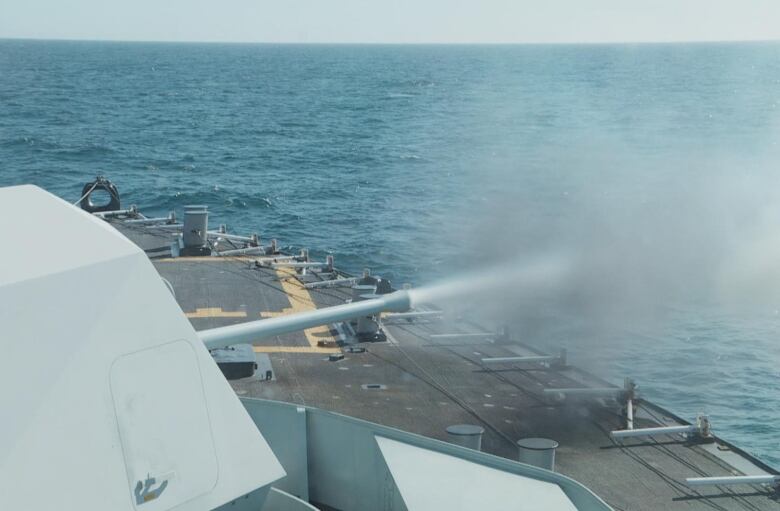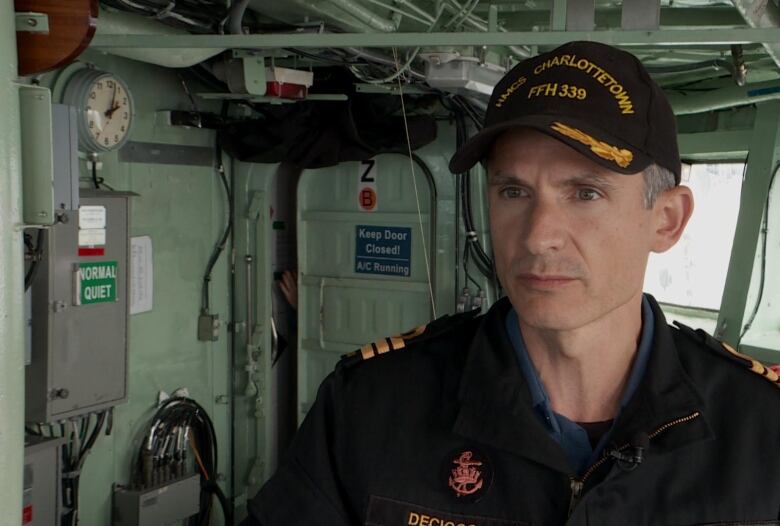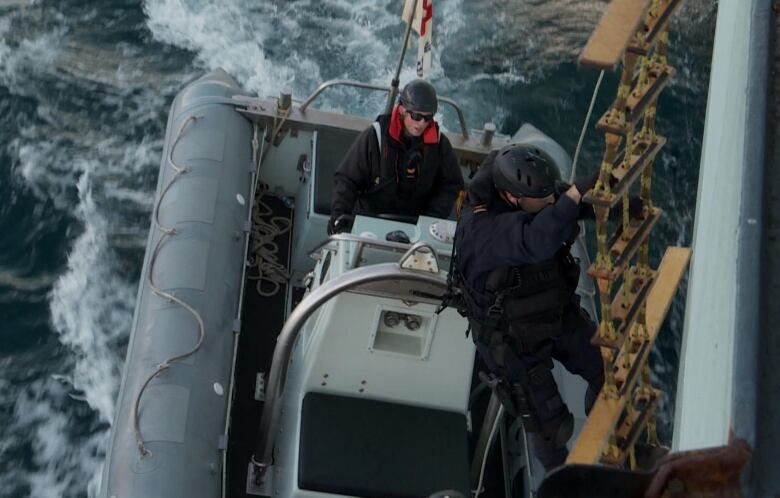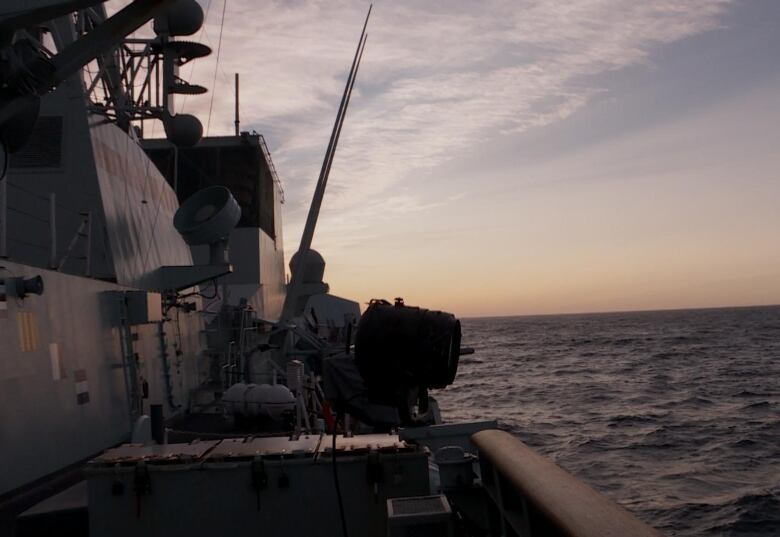Boarding ships and air attacks: Operation Nanook begins in Labrador Sea
Annual exercise tests the militarys ability to operate in the Arctic

Cmdr.Nathan Decicco squints to try and see the small fast boat that's coming right at his ship.
The glare of the sun makes the fast black motorboat hard to see.
He picks up the black phone next to his chair on the bridge. He's ready to give the order.
"You can carry on with the firing run against the hammerhead target," he tells his operations room.
The big 57 mm gun on the front of HMCS Charlottetown swings into position and fires 10 shots.
Even from inside the bridge, you feel the boom in your chest.
Target practice, of a specialized sort
The splashes show the rounds landed just next to the little boat.
But Decicco isn't upset: his weapons room purposely adjusted their shot to just miss their target. It's a $100,000 remote-controlled boat, designed for target practice, but he wants to give the Danishnavy ship VVderren a shot as well.

The two ships are spending several days doing exercises together.
This exercise is good practice for the crew against what could be a deadly scenario.A small speedboat filled with explosives is a low-tech but effective way for someone to attack a warship.
"This is a threat to any warship, whether you're at sea abroad or even at home," said Decicco in an interview with CBC News from the bridge.
"It'sa real threat."
An annual trek north
This is one of the first exercises for this year's Operation Nanook. Now in its 12th year, the exercise is the annual trek north for the military.
It's a chance for the navy, air force and army to practice working together in the north.

Former prime minster Stephen Harper would often visit the exercise, bringing media and attention to it and the north. Under Justin Trudeau, the exercise hasn't been given the same profile.
Even though the navy has had more than a decade of these exercises, Charlottetown's captain says there's tremendous value in coming to the Arctic every year.
"The environment is always changing and the sailors are always changing," said Decicco.
Like most of the sailors on his ship, he's travelled to other parts of the world but has never been up north.
He said the same people who were planning and executing the exercise in the early years have moved on.

"You need to continue to expose the current cadre of planners and operators to the Arctic problem so they can understand the complexities of it, especially around the logistics and the weather of operating in this kind of environment," he said.
"We can continue to have that as a real capability, rather than saying it's something we did in the past, and therefore we should be able to do that in the future."
Decicco says the economic,shipping and touristactivity in the North has only increased in the last decade, and the military's presence needs to increase with it.
Testing new technology
HMCS Charlottetown hasn't been modified to carry the new Cyclone helicopters, so it's travelling north without traditional air support on board.
The ship's only eye in the sky is a new drone it is testing out
Charles Harding, a weapons engineering technician, is operating the new drone on this trip.

"If we have to come to a complete stop and look forward, we can fly out to a maximum of two kilometres," he said.
That will let the captain see what lies ahead, which will be be important when the ship encounters ice.
The 23-year-old frigate was not designed to operate in ice-filled waters.These warships were designed for hunting submarines not breaking ice.
It can take out ships, missiles and airplanes, but when it comes to sea ice, all HMCS Charlottetown can do is go around.
"They have a lot of fragile bits that would be exposed to risk if they were operating in ice environment," said Decicco.













_(720p).jpg)


 OFFICIAL HD MUSIC VIDEO.jpg)
.jpg)



























































































